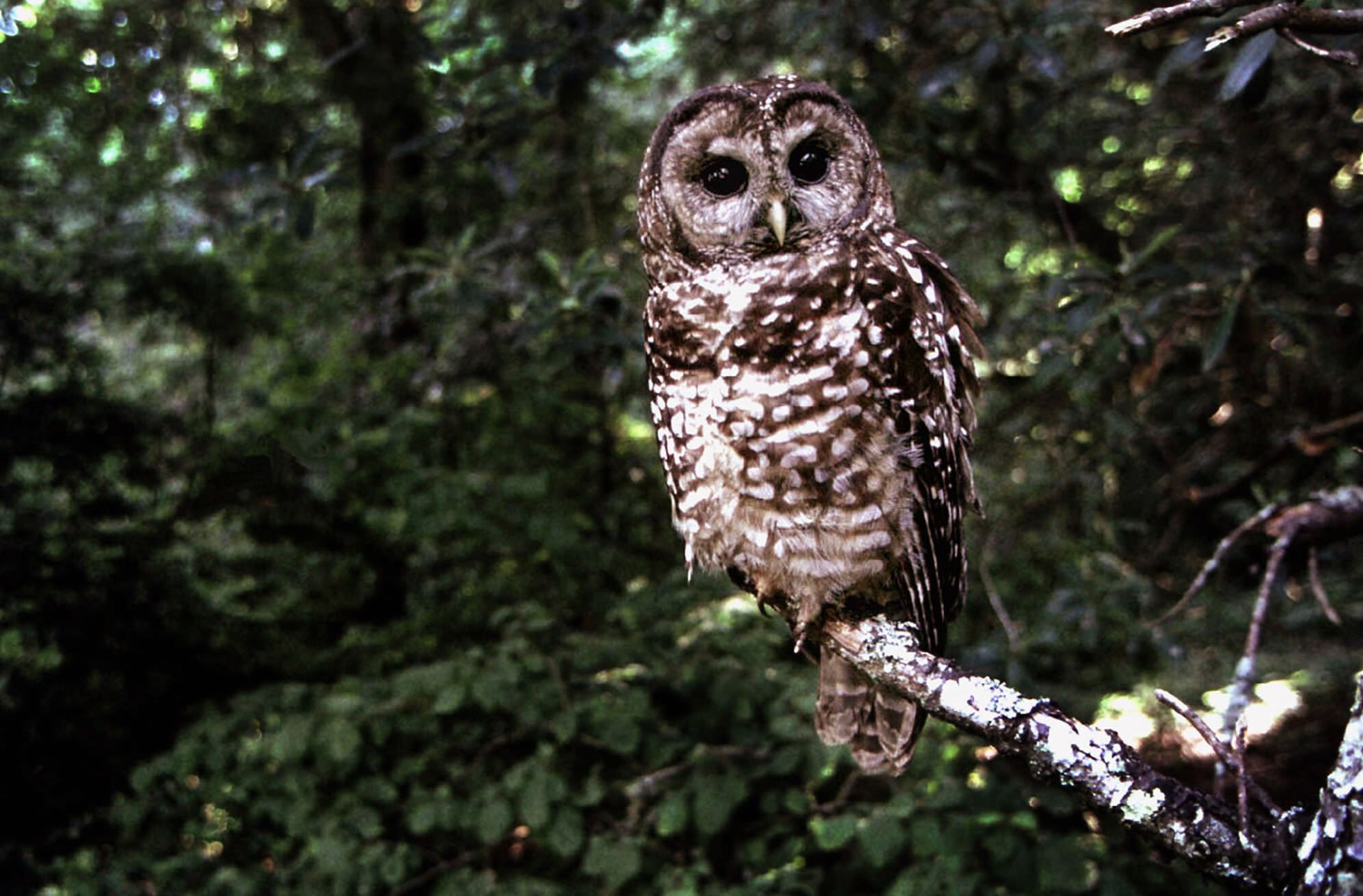The Pacific Northwest forest apparently isn’t big enough for the both of them.
Across that gorgeous emerald range, federally protected northern spotted owls and invasive barred owls are in a nasty turf war. In a new report from the front lines, a U.S. Geological Survey study says that spotted owls that the U.S. Fish and Wildlife Service placed on the endangered species list to save them from logging and development don’t stand a chance.
Research shows that spotted owl populations have fallen by up to 77 percent in Washington state, up to 68 percent in Oregon and by more than half in California, based on some estimates. “In addition, population declines are now occurring on study areas in southern Oregon and northern California that were previously experiencing little to no detectable decline through 2009,” the USGS said in a statement about the report released Wednesday and published in The Condor: Ornithological Applications.
Barred owls are an eastern species that migrated west. They compete with spotted owls in the mountainous forest for food and space. An earlier Fish and Wildlife study was frank about the severity of the problem. “Barred owls now outnumber spotted owls in many portions of their range,” it said. Wherever barred owls were established, spotted owl populations plummeted.
“The U.S. Fish and Wildlife Service is concerned that without barred owl population management, the spotted owl is likely to go extinct in some parts of its range,” Fish and Wildlife said. Wednesday’s USGS study said the only place where spotted owls aren’t gravely affected is a small section of California where barred owls were removed.
Spotted owls had enough problems without this new home invasion. Before they were listed as threatened, timber harvesting and human development converted old-growth forest to homes and businesses. The trees the owls prefer were cut for lumber. Forced into corners of the forest, they had less food to hunt and starved, according to Fish and Wildlife.
“Estimates suggest that the amount of suitable habitat available to spotted owls has been reduced by over 60 percent in the last 190 years,” the agency said. Then came the bigger more aggressive barred owl, a gorgeous bird that knows how to adapt to a change in its surroundings. Their diet isn’t as picky as that of spotted owls, so they’re better survivors.
“This study provides strong evidence that barred owls are negatively affecting spotted owl populations,” said Katie Dugger, a research biologist at the USGS Oregon Cooperative Fish and Wildlife Research Unit, Oregon State University and lead author on the report. “The presence of barred owls was associated with decreasing spotted owl survival rates in some study areas, and spotted owls were disappearing from many of their historical breeding territories as those areas were invaded by barred owls.”
The range of the owls is so large that a team of 37 researchers worked to observe them and analyze the data in 11 study areas.
It doesn’t appear that spotted owls can survive with barred owls in the picture, and certainly not if the barred owls dominate the forest.
“The amount of suitable habitat required by spotted owls for nesting and roosting is important because spotted owl survival, colonization of empty territories, and number of young produced tends to be higher in areas with larger amounts of suitable habitat, at least on some study areas,” Dugger said.



